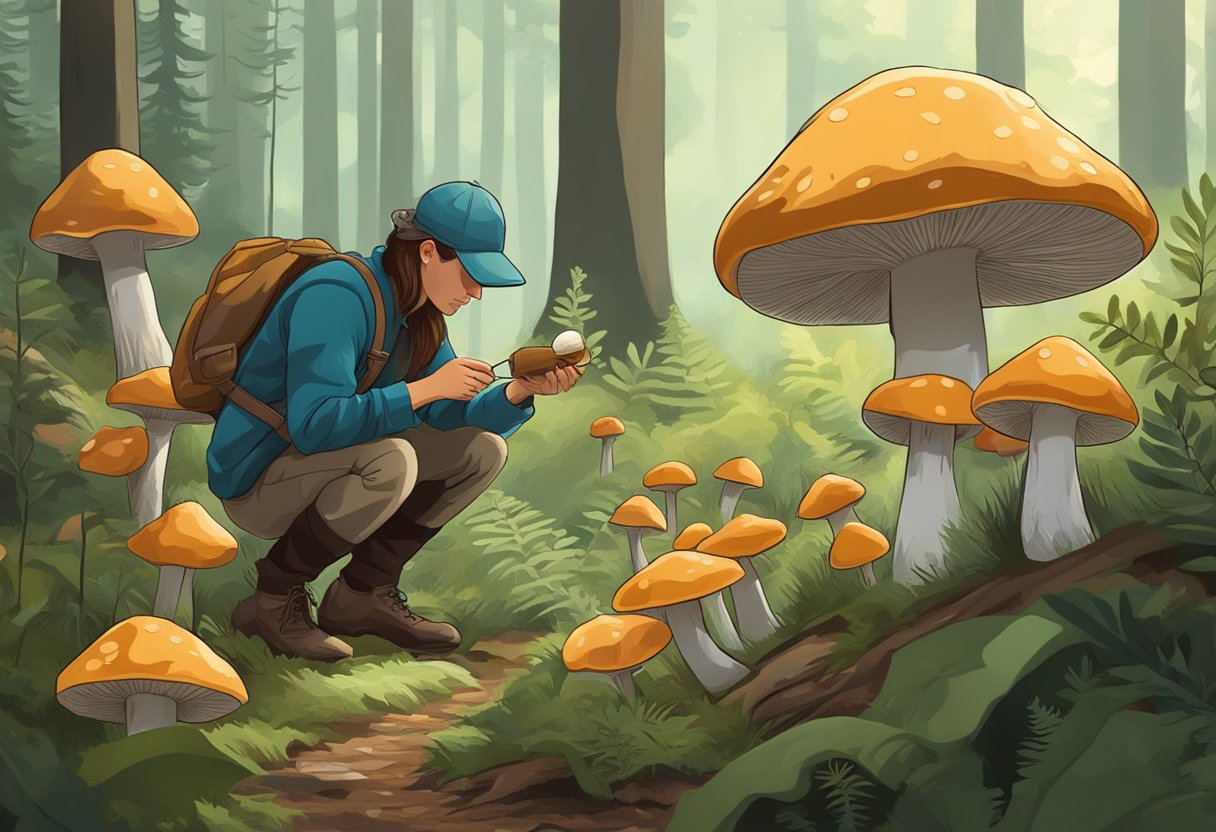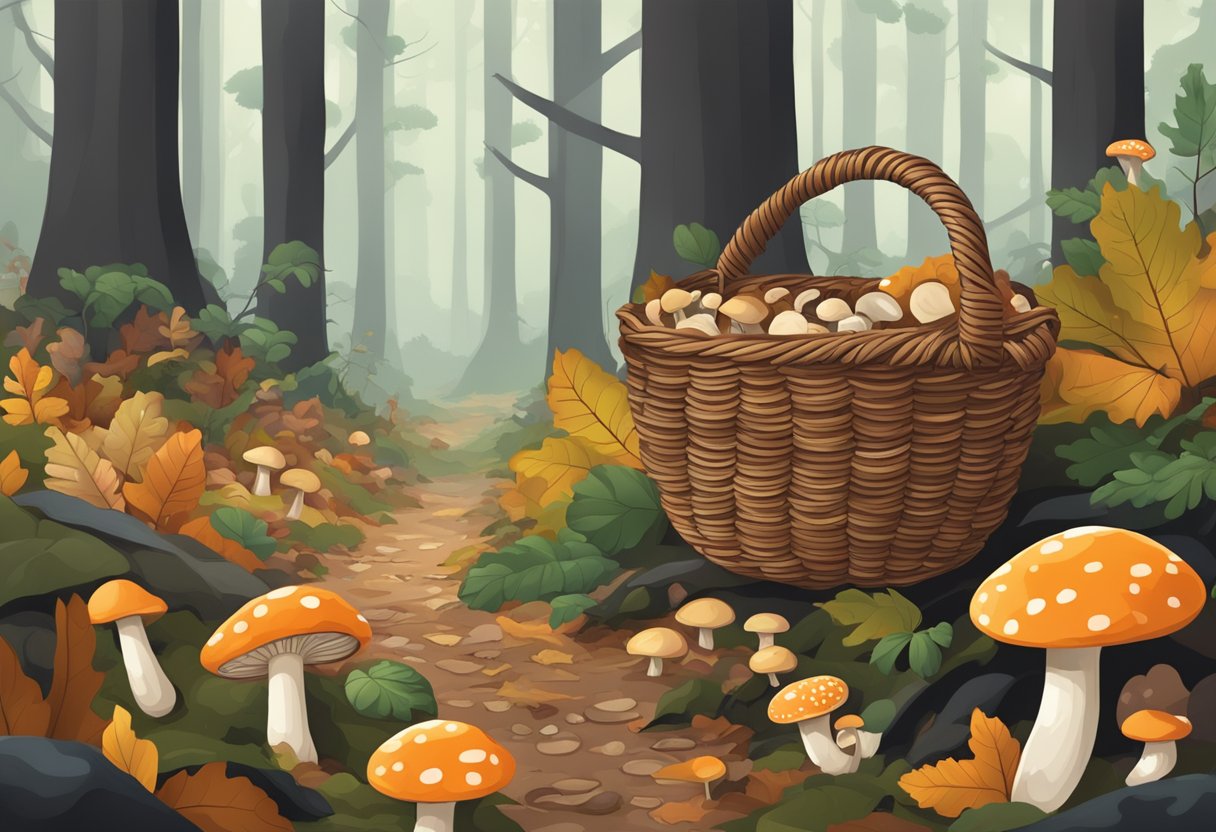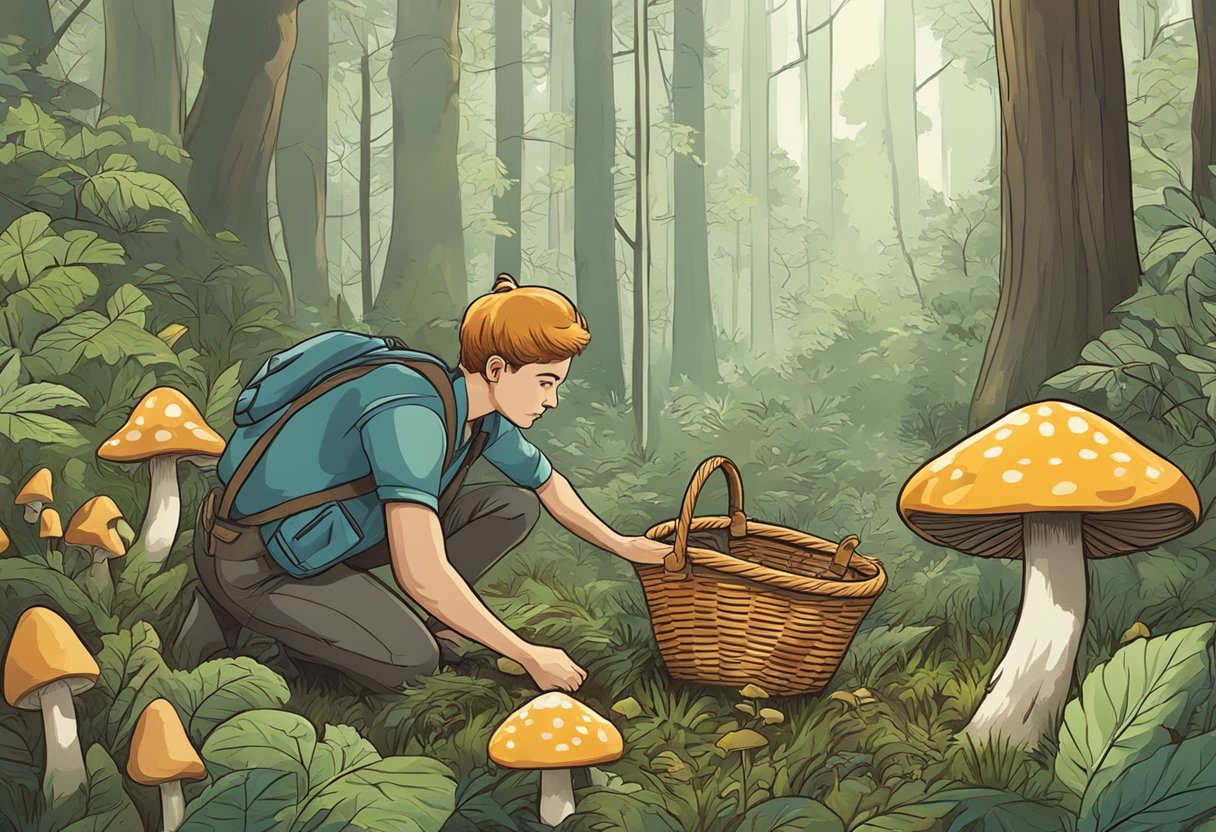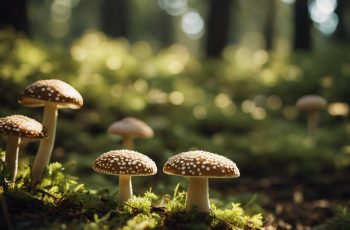Mushroom foraging offers a unique opportunity to connect with nature while searching for edible fungi. Venturing into the forest to forage mushrooms can be both a peaceful outdoor activity and a practical way to acquire natural food. Before you start, it’s important to educate yourself about the kinds of mushrooms safe for consumption and how to identify them responsibly. It’s also essential to know the laws and regulations in your area concerning foraging, as some regions may have restrictions or protected species.

While partaking in this age-old practice, always prioritize safety and sustainability. Understand that not all mushrooms are edible, and some can be highly poisonous. Arm yourself with knowledge, perhaps by joining a local foraging group or taking a class, so that you can correctly identify and harvest mushrooms. When you venture into the wild, remember that forests are delicate ecosystems. Only take what you need, and always forage with minimal disturbance to the surrounding habitat.
Key Takeaways
- Mushroom foraging connects you with nature and could provide natural food.
- Educate yourself about safe mushroom identification and local foraging laws.
- Prioritize safety, sustainability, and respect for the environment when foraging.
The Essentials of Mushroom Foraging

Mushroom foraging is an engaging activity that lets you explore the natural world while also providing an opportunity to collect edible fungi. Knowledge, preparation, and awareness of local guidelines are crucial to ensure a successful and sustainable harvest.
Understanding the Basics
Your initiation into mushroom hunting starts with recognizing different fungi species and discerning which are edible. It’s imperative to learn about the types found in your region, the Olympic Peninsula, North America, or the Bay Area. Understanding seasons and the right environmental conditions, like specific weather patterns, will improve your chances of finding mushrooms.
Safety and Ethics in Foraging
Foraging safely means being able to identify edible mushrooms from poisonous ones. Misidentification can lead to serious health risks. It’s also vital to forage ethically, adhering to guidelines that protect the environment, such as harvesting in a way that allows the fungi to regrow. Before heading out, research local laws as parks in New York or forests in Canada might have specific regulations.
Gearing Up for Mushroom Hunting
The right gear will make your foraging trip more fruitful and enjoyable. A sturdy knife, a basket or breathable bag for your finds, and a field guide specific to the area you’re exploring are essential. For detailed study, a magnifying glass can help with spore print analysis, which is crucial for identification.
Foraging Opportunities and Locations
Discovering where to forage is part of the excitement. Look for locations known for their fungal variety, such as the Pacific Northwest or Virginia’s diverse forests. Always obtain necessary permissions, and plan accordingly. Public lands and mycological society outings in your region are a good starting point.
Planning Your Foraging Trip
When planning your trip, consider seasons and weather, as they greatly affect mushroom growth. Early morning after rain can be the best time to head out. Checking local weather reports, and planning your travel can ensure you’re foraging at optimum times.
Joining Foraging Workshops and Classes
Participating in educational workshops and classes enhances your foraging skills. Groups like the Puget Sound Mycological Society provide resources and events for novice and experienced foragers alike. Experts like Daniel Winkler can offer invaluable knowledge in foraging safely and successfully.
Utilizing Technology in Foraging
Technology has a role to play too. Apps like iNaturalist help you identify species while on the go and connect you with a community for advice and confirmation. This digital support can be particularly useful when you’re in the field.
Mushroom Foraging for Different Groups
Foraging is for everyone. Whether you’re a hobbyist, herbalist, or just looking to engage your kids in a new activity, there are resources tailored to your needs. Classes tailored to specific groups, such as families with children or professional herbalists, ensure everyone gains from the experience safely and enjoyably.
From Field to Kitchen
In the transition from field to kitchen, understanding the proper handling, preservation, and preparation of mushrooms ensures their optimal use and enjoyment. You’ll also learn the principles of sustainable harvesting and the cultural significance of mushrooms that extends beyond culinary purposes.
Preservation and Cooking Techniques
Once you’ve foraged edible mushrooms like chanterelles, porcini, morels, and boletes, it’s essential to preserve their freshness before cooking. Chanterelles can be lightly brushed clean and stored in a paper bag in the refrigerator. For long-term use, consider drying or pickling. When ready to cook, sautéing is a simple and popular technique that enhances their natural flavors.
- Preservation Methods:
- Refrigeration: Store in paper bags for short term.
- Drying: Grant mushrooms a longer shelf life.
- Pickling: Ideal for tangy preparations.
- Cooking Techniques:
- Sautéing: Enhances flavor and texture.
- Roasting: Brings out a deep, savory essence.
- Blanching: Prepares mushrooms for further canning or freezing.
Cultivation and Sustainable Harvesting
If you’re interested in your own cultivation, learning from mycology education resources can be beneficial. Sustainable harvesting on farms, such as leaving the root structure intact, ensures future growth. Embrace the diversity of species by growing different mushrooms, starting with easy-to-cultivate options like oyster mushrooms.
- Cultivation Tips:
- Start Small: Use mushroom kits to learn the basics.
- Diversity: Grow various types to increase your mycology knowledge.
- Sustainable Practices:
- No Overharvesting: Take what you’ll use to maintain ecological balance.
- Reseeding: Scatter spores to promote natural propagation.
The Role of Mushrooms Beyond Foraging
Beyond their culinary delight, mushrooms like matsutake and morels hold cultural significance. Understanding their role can enrich your appreciation. Be aware that while magic mushrooms with psilocybin are known for their potential in treating anxiety, they are not legal to forage in many places. Focus on the rich library of edible mushrooms and contribute to the educational dialogue around them.
- Cultural Aspects:
- Matsutake: Revered in Japanese culture symbolizing fertility and happiness.
- Morels: Celebrated in festivals across North America, marking the arrival of spring.
- Educational Value:
- Workshops: Enhance your foraging and culinary skills.
- Roundtables: Discuss the medicinal and psychological impacts of mushrooms like psilocybin within legal frameworks.
Frequently Asked Questions

Mushroom foraging in Florida offers a diverse range of species you can collect. However, it’s crucial to know the regulations, identify edible species correctly, and learn about the ideal seasons and resources to enhance your foraging experience.
What are the legal regulations for mushroom foraging in Florida?
In Florida, you must adhere to state and local regulations which may require permits for foraging on public lands. The Florida Department of Agriculture and Consumer Services provides guidelines, but always check the specific rules of the areas you plan to visit.
How can I identify edible mushrooms in Florida?
Accurate identification of edible mushrooms is vital for your safety. Consider using reliable resources such as the University of Florida’s Institute of Food and Agricultural Sciences extension or investing in a region-specific field guide for mushroom identification.
Where can I find a mushroom foraging class near me?
You can enhance your skills by joining local foraging classes. Look for workshops or courses offered by local mycological societies or check community boards for foraging events near you.
What is the best time of year to go mushroom hunting in Florida?
Mushroom foraging can be most productive after rainy periods, typically from late spring through fall. The specific timing can vary based on the species you’re targeting and local weather patterns.
Are there any guided mushroom foraging tours available?
Yes, guided tours can offer valuable hands-on experience. Search for local mycology groups or nature centers that may offer guided mushroom foraging tours.
How do I use a Florida mushroom hunting map for foraging?
A mushroom hunting map can help you locate potential hotspots for foraging. Use resources such as interactive maps from nature reserves or join local foraging communities online to share sites and tips for using maps effectively.

